Paper, Paradigms for biologically inspired design
Biologically inspired design is attracting increasing interest since it offers access to a huge biological repository of well proven design principles that can be used for developing new and innovative products. Biological phenomena can inspire product innovation in as diverse areas as mechanical […]
Functional surfaces have proven their potential to solve many engineering problems, attracting great interest among the scientific community. Bio-inspired multi-hierarchical micro-structures grant the surfaces with new properties, such as hydrophobicity, adhesion, unique optical properties and so on. The geometry and fabrication of these surfaces are still under research. In this study, the feasibility of using […]
Bio-Inspired Nano-Sensor-Enhanced CNN Visual Computer
This paper looks into biologically inspired CNN subroutines and nature inspired algorithms that can be used to classify data, and process and recognize images.
Learn more (opens external site)
A new study compares the accumulation of mutations across many animal species and has shed new light on decades-old questions about the role of these genetic changes in ageing and cancer. Researchers found that despite huge variation in lifespan and size, different animal species end their natural life with similar numbers of genetic changes.
Most studies on animal personality evaluate individual mean behaviour to describe individual behavioural strategy, while often neglecting behavioural variability on the within-individual level. However, within-individual behavioural plasticity (variation induced by environment) and within-individual residual variation (regulatory behavioural precision) are recognized as biologically valid components of individual behaviour, but the evolutionary ecology […]
Research, The University of Chicago Marine Biological Discovery
The Marine Biological Laboratory is a world-renowned scientific institution, and scientists and students come to the MBL throughout the year to pursue research and education in diverse areas of fundamental biological discovery.
The Division of Research encompasses all research programs at the Laboratory, including the development and management of research services, research budgets, the assignment […]
Professor Brainerd and her research group combine anatomical studies of the musculoskeletal system with principles and techniques from engineering to understand the mechanical basis of movement in animals. Current projects include: biomechanics of the temporomandibular joint, muscle architecture, intercostal muscle function, and the development of a new 3D imaging technology, X-ray […]
As part of the Design Field Notes series, Berkeley architecture associate professor M. Paz Gutierrez joined Jacobs Hall for its annual Fall Talks. In her talk, she shared her genre-bending projects, which often draw from nature for inspiration and materials. Explaining that she […]
Researcher: Hannah Stewart, Exoskeleton Research and BioInspired Design, UC Berkeley
Hannah Stuart is a researcher in the Mechanical Engineering Department at UC Berkeley. She focuses on improving robot dexterity by designing novel grippers, hands and exoskeletons. She also focuses on bioinspired manipulation strategies. Her interest in robot dexterity comes from its variety in application, which includes remote exploration, search-and-rescue, and human […]
Wyss Institute for Biologically Inspired Engineering
The Wyss Institute for Biologically Inspired Engineering is a cross-disciplinary research institute at Harvard University which focuses on developing bioinspired materials and devices for applications in healthcare and sustainability. The Wyss Institute was launched in January 2009 with a $125 million gift to Harvard—at the time, the largest single philanthropic gift […]
Opening the Flood Gates for Wearable Technology
Researchers from multiple different universities and labs are working on creating a sort of guide for future projects that are centered around wearable technology. As technology advances, we continue to make things easier, faster, and more useful, and wearable technology has the potential to be the optimal combination of all of […]
We aim to develop micro-scale robotic systems that can demonstrate insect-like locomotive capabilities in aerial, aquatic, and terrestrial environments. To design highly agile, multifunctional, and robust micro-scale robots, we work on (1) develop high bandwidth and robust soft actuators and active materials for […]
News, Soft robot reaches the deepest part of the ocean
The creation of the robot was inspired by the bodily structure of sea creatures, who are able to survive the crazy pressure of the deep sea with their soft bodies. This robot can survive even the deepest parts of the world’s seas, the […]
In the past decades, drag-reduction surfaces have attracted more and more attention due to their potentiality and wide applications in various fields such as traffic, energy transportation, agriculture, textile industry, and military. However, there are still some drag-reduction materials that need to be deeply explored. Fortunately, natural creatures always have the best properties after long-term […]
Messersmith Lab at UC Berkeley is a research group in departments of bioengineering & materials science and engineering. The group studies structure-processing-property relationships of materials in biology, and applies bio-inspired materials to solve real-world problems. One of their ongoing projects is on mussel-inspired synthetic adhesives, which is designed by exploiting information […]
Biodesign Institute
We deliver the future of nature-inspired scientific innovation today for the betterment of human health, community safety, and global sustainability. By using the building blocks of Nature’s grand designs, our talented researchers have pushed the frontiers of knowledge and advanced research and discovery to make a major […]
Research Paper, Bioinspiration: Applying Mechanical Design to Experimental Biology
The production of bioinspired and biomimetic constructs has fostered much collaboration between biologists and engineers, although the extent of biological accuracy employed in the designs produced has not always been a priority. Even the exact definitions of “bioinspired” and “biomimetic” differ among biologists, engineers, and industrial designers, leading to confusion regarding […]
Lisa White, UC Museum of Paleontology, UC Berkeley
Lisa White Assistant Director (Education and Outreach) Lisa joined the UCMP in July 2012 as Director of Education and Outreach. She comes to the UCMP after a 22-year history at San Francisco State University where she held positions of Professor of Geosciences and Associate Dean of the College of Science and […]
Jessica Lee, Bio-inspired Robotics/Mechanical Engineering, UC Berkeley
Jessica Lee is a PhD Graduate in Mechanical Engineering from UC Berkeley and now works at Dishcraft Robotics as a Mechanical Engineer. At Berkeley, she worked on bio-inspired design to improve robot performance. She received her Master of Science in ME and is a part of Biomimetic Millisystems Lab where she […]
Biologically Inspired Design: Methods and Validation
The aim of this paper is to establish a comparison among a set of design methods, meant to guide industrial designers in carrying out activities leading to bio-inspired design. The results of the literature review are presented, with emphasis drawn on existing documented approaches to design inspired […]
The Ornithopter project
The Ornithopter project is a research project at the Biomimetic Millisystems Lab at UC Berkeley. They made a robot that uses flapping flight (unlike drones and fixed wings) to maneuver and navigate an unknown environment. A set of ornithopters can coordinate together to sense and navigate previously unseen obstacles.
Festo, an industrial provider of pneumatics and electrical automation technology, is also known for its Bionic Learning Network. The company strives to mimic and learn from nature. They mimic the locomotion of various animals to gain insight on better approaches to tasks difficult for traditional robots. This innovation mimics the manta […]
Scientists designed and connected two different artificial cells to each other to produce molecules called ATP (adenosine triphosphate). ATP is the fundamental unit that all living things use to carry and provide energy to run processes in cells. The scientists developed one group of artificial cells that generates protons when it […]
The research focus of this lab, headed by David Zarrouk, is the modeling, designing, and manufacturing of unique robots. This includes miniature crawling robots and serial crawling robots for search & rescue applications, space, maintenance, agricultural and medical purposes. They specialize in designing minimally actuated robots that are easy to control […]
Biology professor and marine biologist Kelly Sutherland from the University of Oregon has been awarded $1.1 million over three years from the Gordon and Betty Moore Foundation. The project she is working on focuses on how jellyfish must work together to swim in the ocean. She is also working with other […]
Bioinspiration from fish for smart material design and function
Abstract Fish are a potentially rich source of inspiration for the design of smart materials. Fish exemplify the use of flexible materials to generate forces during locomotion, and a hallmark of fish functional design is the use of body and fin deformation to power propulsion and maneuvering. As a result of […]
The use of bio-inspiration to create new products and devices requires the development of new design tools and manufacturing technologies, as well as the education of students capable of using them. This paper explores education tools that emphasize bio-inspired product realization. This paper provides an overview of educational technologies and describes […]
Science and technology of farm animal cloning: State of the art
In this article, researchers at the Department of Genetics and Biotechnology in the Danish Institute of Agricultural Sciences, remark their findings of nuclear transfer cloning. They discuss Dolly, the first cloned sheep, and the egg cloning techniques that they used to produce Dolly. There are also many […]
Adhesives, including bio-inspired ones that mimic gecko feet and octopus suckers, are not yet practical for mass production. To develop a better alternative, Xi Chen and Tetsushi Taguchi turned to a polymer, poly (vinyl alcohol) (PVA), which is not irritating to the skin and is currently used in some wound dressings, […]
Hao Yan studied chemistry at Shandong University, China. He obtained his PhD in Chemistry under Professor N. C. Seeman, New York University in 2001. Following a period as an Assistant Research Professor at Duke University in the Computer Science department, he joined Arizona State University as Assistant Professor in Department of […]
Biomimicry Research and Innovation Center
The BioMimicry Research and Innovation Center (BRIC) at the University of Akron is dedicated to using interdisciplinary research projects to catalyze biomimicry-based innovation. This innovation center connects artists, designers, business people, engineers and scientists to draw inspiration from diverse organisms. Beyond research, BRIC offers training by developing […]
Design and bio-applications of biological metal-organic frameworks
Abstract: “Biological metal-organic frameworks (bioMOFs) are a new subclass of the MOF family. In comparison with traditional MOFs, the bioMOFs are made of multifunctional biologically related ligands (bio-ligand) and metal ions. The bio-ligands confer biological compatibility for traditional MOFs, thus providing many opportunities for a wide array of biological applications. This […]
Robert J. Full, Int. Biol., UC Berkeley
Robert J. Full is a Chancellor’s and Goldman Professor in the Department of Integrative Biology at the University of California at Berkeley. He received his PhD from SUNY Buffalo and was a postdoctoral researcher and lecturer at the University of Chicago. His primary rsearch interests reside in the area of comparative […]
Learn about our two Decals!
 Click here to find out more about our Fall Bioinspired Design Decal and our Spring Bioinspired Design in Action Decal – ALL MAJORS are welcome.
Click here to find out more about our Fall Bioinspired Design Decal and our Spring Bioinspired Design in Action Decal – ALL MAJORS are welcome.Berkeley BioDesign Community
 Click here to learn about the BioD: Bio-Inspired Design @ Berkeley student organization or here to signup for more info.
Click here to learn about the BioD: Bio-Inspired Design @ Berkeley student organization or here to signup for more info.Search
Student Login

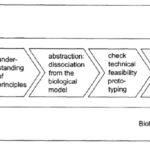
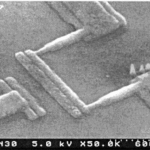
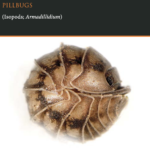
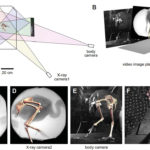


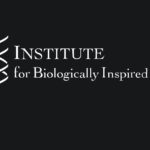
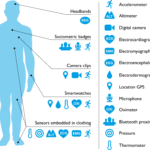
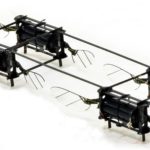
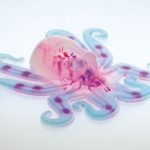
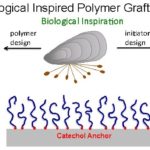




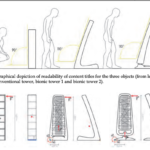
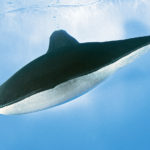
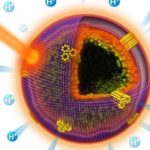

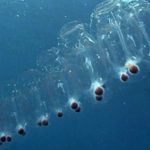



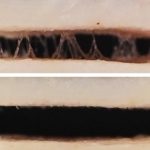

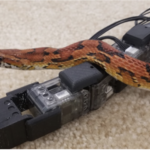
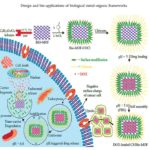
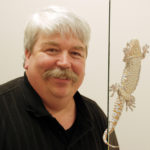


I imagine that the neurological circuits underlying these processes are governed by both 2d spacing maps with their brains as…
to reduce the impact of car accidents, it may be possible to study the force diverting physics of cockroaches to…
you see this type of head-bobbing stability in many avian creatures related to pigeons like chickens. the head ability to…
not like they taught horses how to run! this is an example of convergent evolution where both sea creatures and…
The brain functions in a similar way with neuronal connections. our brains are able to utilize the multiplicity of connections…